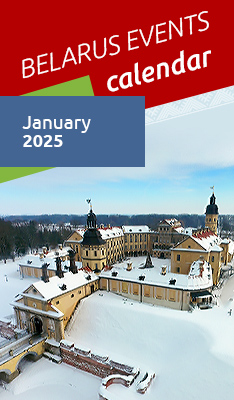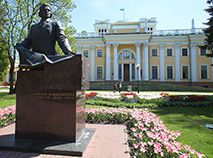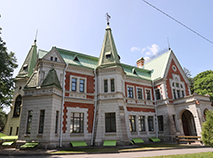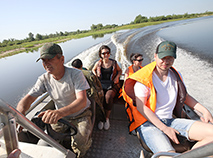Gomel region

Sovetskaya Street in Gomel
The Gomel region is one of the 6 administrative regions (or oblasts) which make up Belarus. Gomel is located in the south-eastern corner of the country
The Gomel region of Belarus borders Russia in the east and the Ukraine in the south. Around a third of the region is agricultural land.
The people of Gomel region
-
1.338,6 million people live in the Gomel region (on 1 January 2024)
-
72.93% of the population live in the towns and cities
-
88.22% of the population are Belarusians
-
7.71% are ethnic Russians
-
2.15% are Ukrainians
The main religion is Orthodox Christianity.
Towns and cities in the Gomel region
Gomel is the main city in the region, which is divided into 4 districts. The Gomel region is divided into 21 districts and there are 17 cities, 18 towns and 2608 villages.
Transport links in the Gomel region
The Gomel region has a good road infrastructure with major international motorways between Russia, Europe and the Ukraine running through the region.
The Gomel region has an extensive rail network, with 90% of the country’s rail freight and 50% of passenger traffic running through the region.
The River Dnieper and its tributaries run from north to south and spans 420 km. Inflows of the Dnieper and Pripyat rivers are used for both passenger and shipping and are of great value to the region. The Gomel region also boasts numerous lakes and extensive canal systems.
There are airports at Gomel and Mozyr.
Industry in the Gomel region
The Gomel region is one of the most advanced industrial regions in Belarus. There are about 300 medium and large enterprises, which between them account for 22% of the total industrial output of the Republic of Belarus. Approximately 70% of all production is exported, and Gomel enjoys trading links with more than 100 countries.
Main industries include:
-
fuel
-
chemicals
-
timber
-
light industries
-
food processing
-
machine building, especially agricultural machinery
-
steel and rolled metal production
The main industrial area centers around Gomel, Mozyr, Zhlobin, Svetlogorsk, Rechitsa and Dobrush.
There are the Gomel-Raton free economic zone and Gomel science and technology park.
Natural resources in the Gomel region
The Gomel region produces a range of natural resources and minerals, including:
-
oil (60 oilfields)
-
potash and rocksalt
-
brown coal
-
peat
-
building stone
-
sand
-
chalk
The region is home to the Pripyatsky National Park, an area of pristine nature and breathtaking landscapes of the Belarusian Polesye. The park is the only place in the world where you will find primeval floodplain oak forests.
Agriculture in the Gomel region
The region is self-sufficient agriculturally, and also provides the food-processing sector with raw materials.
The region has a significant cattle-breeding industry, serving meat and dairy markets, as well as significant arable farming centres for potatoes, vegetables and flax (in the eastern part of the region). Land given over to agriculture accounts for some 1.2 million hectares.
Approximately 50% of production is exported to various countries across the world.
Culture and media in the Gomel region
There are a number of archeological, historical, cultural and architectural monuments, as well as 26 museums, 4 theatres and 2 art galleries in the Gomel region.
Gomel Palace & Park Ensemble is one of the oldest and famous museums. The Rumyantsev-Paskevich Residence is the main historical and cultural site of Gomel Palace and Park Ensemble. The ensemble is an architectural monument of the late18th― early19th century.
There are various festivals of arts – regional, republican and international levels in the region.
In 2011 Gomel became the Belarus and CIS Capital of Culture. These statuses underline the high level of Gomel achivements in cultural sphere.
The Gomel region has 70 state newspapers and magazines, together with long-established regional television and radio stations.








 print version
print version make home page
make home page add to bookmarks
add to bookmarks









